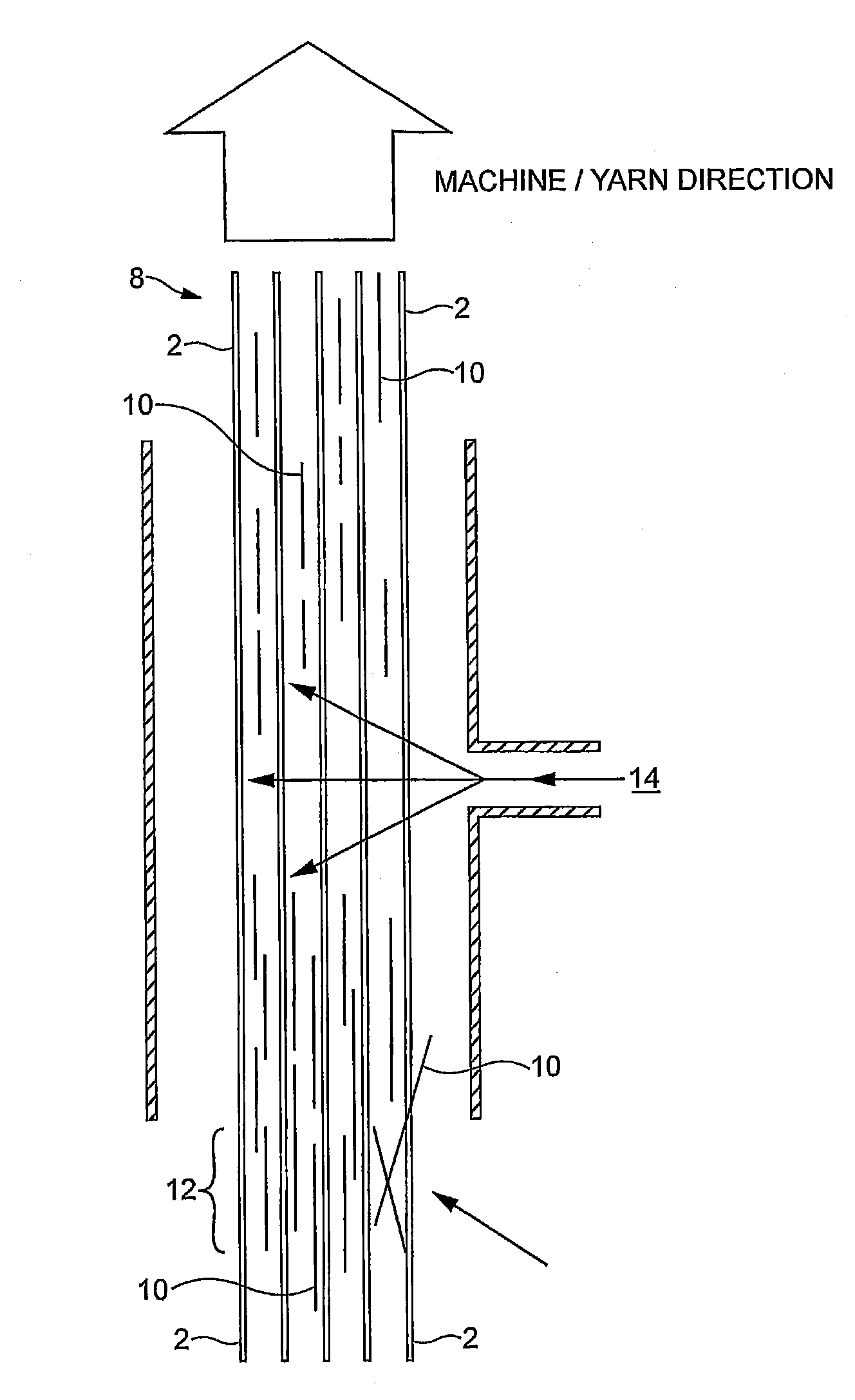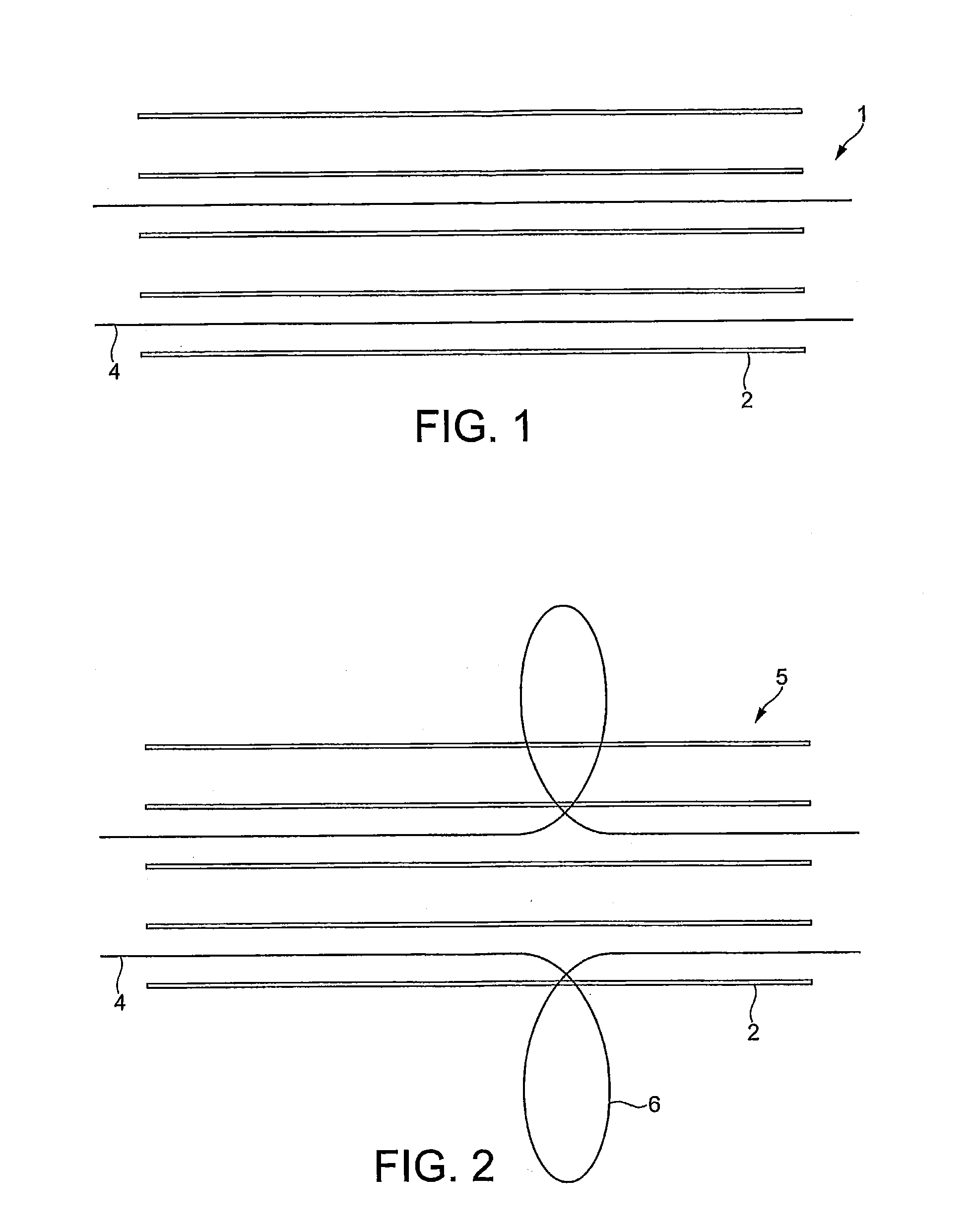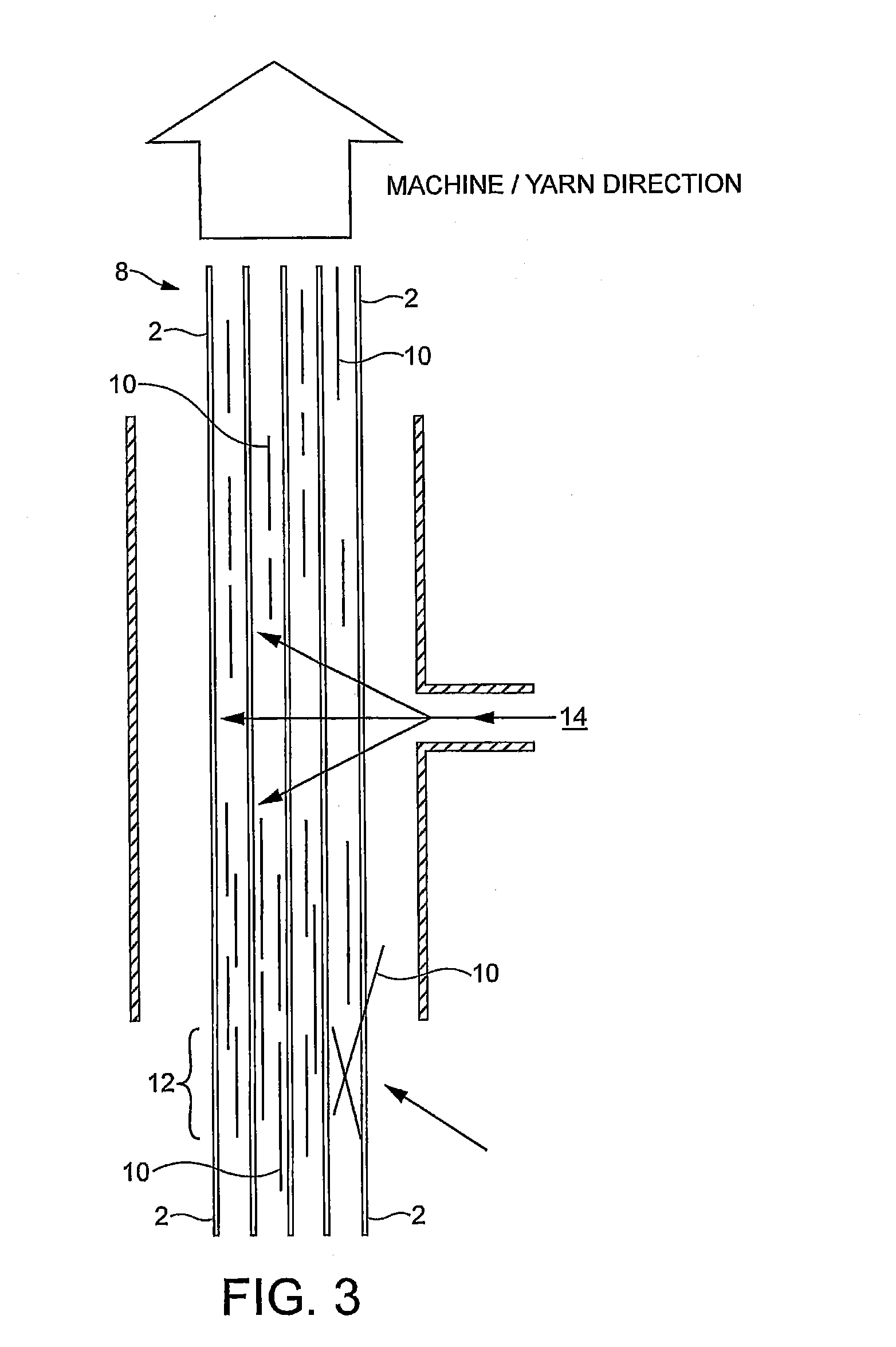Producing yarn
a technology of yarn and process, applied in the direction of fiber mixing, mechanical equipment, transportation and packaging, etc., can solve the problems of elastic hysteresis, wear on the belt, and failure mode, so as to reduce the beneficial properties of heat resistant materials, improve the distribution of heat resistant fibres, and reduce the benefits of invention.
- Summary
- Abstract
- Description
- Claims
- Application Information
AI Technical Summary
Benefits of technology
Problems solved by technology
Method used
Image
Examples
Embodiment Construction
[0033]FIG. 1 illustrates a comparative yarn 1, which consists of thermoplastic filaments 2 of Nylon 66, and heat resistant material filaments, of para aramid 4. Before activation the filaments of thermoplastic polymer 2 and heat resistant material 4 are well mixed in the yarn.
[0034]FIG. 2 illustrates the comparative yarn 5 after activation (scouring in water and drying). The activation process shrinks and bulks the bundle of thermoplastic polymer filaments 2. However, the heat resistant material filaments 4 do not act in the same way as the thermoplastic filaments 2. Consequently, the heat resistant filaments 4 are forced out of the mixed yarn forming loops 6. Loops 6 cause disadvantages including reduced abrasion resistance and hence reduced durability, reduced consistency of the final product, reduction of the dynamic performance of the fabric especially in terms of stretch characteristics and a reduced or inconsistent adhesion performance.
[0035]FIG. 3 illustrates the process acco...
PUM
| Property | Measurement | Unit |
|---|---|---|
| length | aaaaa | aaaaa |
| length | aaaaa | aaaaa |
| length | aaaaa | aaaaa |
Abstract
Description
Claims
Application Information
 Login to View More
Login to View More - R&D
- Intellectual Property
- Life Sciences
- Materials
- Tech Scout
- Unparalleled Data Quality
- Higher Quality Content
- 60% Fewer Hallucinations
Browse by: Latest US Patents, China's latest patents, Technical Efficacy Thesaurus, Application Domain, Technology Topic, Popular Technical Reports.
© 2025 PatSnap. All rights reserved.Legal|Privacy policy|Modern Slavery Act Transparency Statement|Sitemap|About US| Contact US: help@patsnap.com



